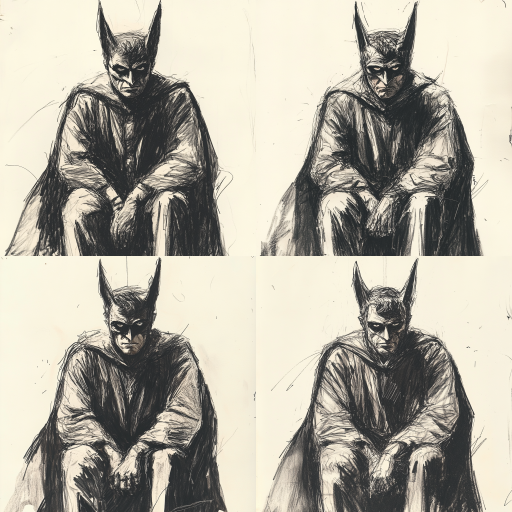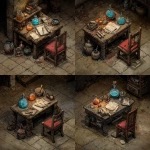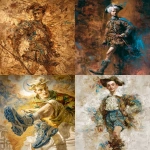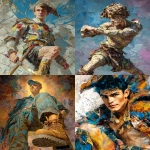Explore the Best AI Image Gallery

The Impact of AI on Digital Creativity: Opportunities and Challenges
In recent years, artificial intelligence (AI) has made significant strides in various industries, and the creative sector is no exception. From music and visual arts to writing and design, AI is transforming how creators conceptualize and produce their work. This blog post will explore the various aspects of AI's impact on digital creativity, including its applications, ethical considerations, and what the future may hold.
AI in the Creative Industry
AI tools are now being integrated into the creative workflow, offering a wide range of functionalities that enhance and streamline various processes. Some notable applications include:
- Content Generation: AI algorithms can analyze existing content, learning styles, themes, and tones. They can then generate original pieces of writing, visual art, or music, often in minutes. Platforms like OpenAI's GPT-3 showcase the capability to produce human-like text, while tools such as DALL-E create unique artwork based on textual prompts.
- Design Assistance: AI is also utilized in graphic design to suggest layouts, color palettes, and typography, making the design process more efficient. Tools like Adobe's Sensei harness machine learning to automate time-consuming tasks and even predict what users might want next.
- Personalization: In marketing, AI tailors content and advertisements to the preferences of individual users. By analyzing user data, AI can create personalized user experiences that resonate on a deeper level, enhancing engagement and conversion rates.
The Role of Collaboration
Rather than replacing human creativity, AI serves as a collaborator that enhances human abilities. Many artists and creators are embracing AI as a partner in their creative processes. By experimenting with AI-generated content, creators can push the boundaries of their art and explore new avenues of expression. For instance, musicians can use AI to compose accompaniment or generate beats, while visual artists can present their concepts to AI models, which can then expand upon them.
Ethical Considerations
As the use of AI in creative industries grows, several ethical concerns have emerged. Key issues include:
- Copyright and Ownership: Who owns AI-generated art? This question has led to a complex debate about intellectual property rights and the legal status of AI creations. Since AI learns from existing works, the line between inspiration and imitation can easily blur, complicating attribution and ownership.
- Bias and Representation: AI algorithms can inadvertently perpetuate existing biases present in the data they are trained on. If the input data lacks diversity, the output will likely reflect those same limitations. This raises concerns about underrepresentation in artistic narratives and voices.
- Impact on Employment: The automation of creative tasks can threaten job security for artists, designers, writers, and musicians. While AI enhances productivity, it could also diminish opportunities for traditional creatives, igniting fears about potential job displacement.
Future Trends
As we look to the future, several trends are emerging in AI and digital creativity:
- Increased Collaboration: The partnership between AI and human creators will likely deepen, leading to new hybrid art forms that combine traditional techniques with AI-generated elements.
- Enhanced Personalization: AI will continue to refine its ability to personalize creative experiences, reshaping how audiences interact with art, music, and other content.
- Sustainability in Creativity: As awareness of climate change grows, AI may aid in developing sustainable practices within the creative industries, optimizing resource management, and reducing waste in production processes.
- Emphasis on Human-AI Interaction: The way creatives interface with AI tools will become increasingly important, begging the question of how to cultivate a harmonious collaboration that emphasizes human intuition and context.
Conclusion
The intersection of AI and digital creativity is an evolving landscape filled with both opportunities and challenges. As creators experiment with these tools, the potential for innovation is limitless. However, as we move forward, it is crucial to address the ethical considerations surrounding the use of AI in the creative space. By nurturing a collaborative relationship between human creativity and AI, we can unlock new dimensions in artistic expression while remaining mindful of the complexities that come with this transformative technology.
](https://images.ai-img.art/thumbnails/150/1614d64dd7156c95db952258978be809eb3db8cea4453fec69c49cbdfe63fa94.webp)

](https://images.ai-img.art/thumbnails/150/3a60737a5b67fa252207ad1ae6db245a26284f53fb5846996bb34515b39ff269.webp)







](https://images.ai-img.art/thumbnails/150/8c3bd422d50d35735d8fb33bd314a79e30e5b150129d5d09bdad822a2007593f.webp)

